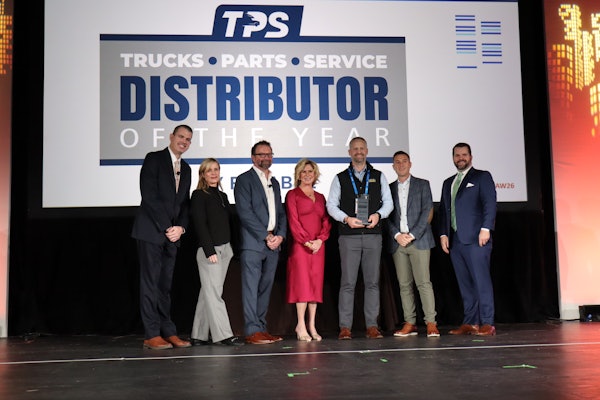
[This article was originally published in 2018 by Trucks, Parts, Service. It has been updated to include more timely information.]
The successful sale of a business is a daunting challenge for buyers and sellers. Unique requirements abound on both sides and in an industry such as this one, where so many business owners are unfamiliar with the mergers and acquisitions (M&A) experience, the process is rife with obstacles.
Executing a mutually beneficial transaction with the least amount of stress possible requires preparation and careful decision-making by both sides. According to experts familiar with the process, there are many aspects each party should research and understand before taking any action toward a possible transaction.
Three keys for sellers:
Don’t rush
The sale of a business doesn’t begin the day it is put on the market, says Tom Marx, senior partner, Hart Marx Advisors, and chairman and chief strategy officer at MBE Group. Business owners looking to earn the largest return for their life’s work should begin preparing their business to sell well before making it available.
In the aftermarket and dealer channels, most businesses can be optimized and positioned to sell in one to three years. Marx says most of this time should be spent ensuring a business is financially attractive — profitable and growing — but pre-sale preparations also may include investing in key departments, cleaning and removing older equipment or workplace hazards and strengthening one’s workforce for a leadership transition.
Any business owner considering a sale has a number in their head that represents what their business is worth, and what they would like to get for it. It is the effort put into a business before it goes on the market that makes that number achievable, says Dan Argiro, partner at Performance Brokerage Services.
“There is always a difference between what an owner thinks a business is worth and what someone will buy it for,” says Argiro. “You have to know what that walkaway number needs to be and how you can get there.”
Setting up a business to thrive under new ownership also can entice buyers. Inland Truck Parts CEO Greg Klein says that is an attribute his company searches for when assessing acquisition targets. If location is the first priority, having a strong team in place that fits into Inland’s corporate culture is a close second.
“We want to be able to look at their people and see who is in place to carry the business for us” after a transaction is complete, he says.
[RELATED: Want to grow? Here's what you'll need to know]
Bill Wade, partner at Wade & Partners agrees, noting most smart buyers will avoid a potential target if they discover the workforce appears unsettled or unskilled.
“To quote [TPS Founder] Jim Moss, ‘You cannot win the Kentucky Derby with a mule,’” Wade says.
But not every moment ahead of a sale for a seller should be spent exclusively focused on maximizing a company’s value. Wade says sellers also should use this time to realistically process and accept their exit from their business, as well as its likely value on the open market. There are no bigger threats to a successful business transaction than an emotional seller’s wounded pride, he says.
“You have to analyze your own situation,” Wade says. “If no one is out there knocking on your door, think about why?”
Get the math right
Marx says another huge challenge for business owners ahead of a sale is changing one’s financial mindset. Buyers evaluate potential acquisition targets on growth trends and potential, not prior success.
“A business that has books that are advantageous from a tax perspective may not be as enticing to a buyer,” Marx says. “[Buyers] want to see an upward trend.”
This means top-line growth visible in quarterly, yearly and trailing 12-month data. Says Marx, “Once you decide you’re going to sell, it’s a good idea to set [sales] targets so while you’re preparing the business, you can stay on track.”
Sellers also need to become familiar with M&A vocabulary, particularly EBITDA. Short for “Earnings Before Interest, Taxes, Depreciation and Amortization,” buyers use EBITDA with a multiplier to determine how much a business is worth. EBITDA serves “as a proxy for operating cash flow,” writes John Wagner, managing director at 1st West M&A LLC, in his book “M&A Basics For People in a Hurry.”
[RELATED: Looking to expand? You'll want an M&A glossary]
Wagner says commercial distribution businesses today can sell for up to seven times their EBITDA, depending on their location, operating efficiency, supplier partners and customer makeup. On that last point, Wagner adds, “If any one customer is in excess of 10 percent of a seller’s business, that starts to be a red flag because if they leave, [the buyer loses] a substantial amount of earnings.”
Finally, sellers need to be prepared to open their books once a sale commences. Buyers will expect full transparency to make an accurate assessment of a company's value and determine an offer price. Performance Brokerage Services Partner Pat Albero says sellers who are unwilling to do so create friction in the sales process.
“If a seller has a number in mind, it best for them to disclose their financials and prove that number is justifiable,” he says.
Work with the best
Maybe the best piece of advice industry experts can give business owners ahead of a sale is to find a M&A professional to manage their transaction. Selling a business is too large of a life event to be taken on without professional support.
“You have to find someone who knows this part of the business because selling a business is so much different than running a business,” says Wade. “For most guys, you’ll only do it once. These experts do it every day.”
Performance Brokerage Services has aided in more than 900 transactions has expertise in the heavy truck and automotive dealership markets. Argiro and Albero work specifically with heavy truck dealers and offer support for sellers and buyers. The duo say their service is designed to ensure sellers are able to exit their business gracefully, meeting their goals, while buyers receive essential guidance on identifying, evaluating and onboarding new locations.
When it comes to finding an expert, it is best to find a firm that can provide M&A-specific legal and accounting services. Wagner, Argiro and Albero all say selling a business using one’s regular attorney and accountant can be done, but it makes the process much longer and introduces the potential for mistakes because the work required is so unique and specialized.
As Wagner notes in his book, a M&A professional “offers a service that avoids common seller errors, maximizes the sale value of your company, avoids pitfalls and, perhaps most importantly, allows a seller to run his business without distraction (and without the substantial demands on his time) from the complicated acquisition process.”
Three keys for buyers:
Find a business that fits
For business owners looking to buy, the first step in a successful acquisition is determining the type of business to target. For dealers and aftermarket operations, this means evaluating areas of operation, growth potential, services offered, industry reputation and customer ledger.
As one of North America’s largest independent distributors, Inland Truck Parts uses census data and economic reports to identify markets that can support a minimum sales threshold for one of its stores, says Klein. While such research has yielded potential greenfield opportunities in the past, Klein says in most cases Inland will find its best avenue for expansion is through acquisition.
“Now virtually every market is served,” he says. “You can put up a new building and try to grow from scratch, but it’s hard. It’s better to buy a legacy business and try to expand it.”
Which legacy business?
Bob Ichniowski, professional advisor at KEA Advisors, says a successful acquisition is one that fits within a company’s growth strategy and/or provides access to something new the purchaser wishes to integrate. He references a business adding a specialized service operation, such as a collision center.
Adds Wade, “If you’re going to stay in this business, you should be looking to upgrade your operations wherever you can. Figure out what you want to do better or what you want to do next, then target those opportunities.”
Argiro also notes buyers should never assume opportunities exist. Proximity to a potential target does not matter if the facility isn't profitable. Additionally, a facility available today will not always remain on the market tomorrow. “If you pass on something, you might never see it again,” he says.
Don’t overbuy
Expanding on the point regarding targeting, experts also note the importance of landing on the best available expansion opportunity, not the closest, most affordable or easiest to acquire. Offering above market value to buy a business isn’t a great financial strategy if there isn’t a clear path to a return on investment. And ROI potential can vary depending on a company’s acquisition strategy.
Wagner says most businesses expand through strategic or financial acquisitions. He defines a strategic acquisition as an add-on acquisition, such as the aforementioned example provided by Klein, when a growing business purchases a smaller company that it integrates into its operation as a method toward serving a larger marketplace and customer base. Financial acquisitions still focus on growing footprint and customer base, but more as an opportunity to increase revenue and profit through centralized operations. These are most visible in the distributor and dealer sectors in acquisitions of regional operations by national chains.
There’s also the matter of understanding a seller’s wants and needs.
Wagner says not every small-business owner requires the largest up-front offer. Some sellers may accept an option with less cash up front and a leasing agreement for their land and buildings that will create a steady future revenue stream. Others may be looking to reduce their tax burden at all cost. Others still may plan to stay with the business through a transitionary period and would accept some of their profits be tied to the company’s future earnings, which is known as an earn-out.
Wagner says buyers who take time to uncover a seller’s motivations before making an offer are able to avoid stressful conversations later.
Never presume success
Even with careful planning and communication before and during a sale, no transaction is complete until all documents are signed and keys are in hand. As such, experts say buyers should never presume a sale going well is a foregone conclusion.
Financial discrepancies and issues found while performing due diligence are not always easily explained away, says Ichniowski. “Things can turn on dime.”
“Our biggest fear when a deal is sidelined by something small,” Albero says. “You never want to think you're on the right track and then something that should have been addressed earlier comes up and creates uncertainty.”
Wagner agrees, adding most transactions that go bad aren’t usually the result of a single discovery causing a buyer to pull his offer, but instead recalculated offers and the emotions they create. “The financial aspect is fairly easy; most of the difficulty comes from the people management and psychology aspect,” he says.
“That’s why it is very important for a seller to look at their business pragmatically from the buyer’s perspective,” adds Marx. “Know what the buyer is going to want to know.”
Finally, there’s the issue of informing employees. This is an area where experts say a buyer and seller’s actions should be the same. An ideal transaction is one that occurs in private and allows both parties to announce the completed sale together. Klein says that’s his preference.
When that option is unavailable — due to news of the transaction leaking to employees, for example — experts say buyers and sellers should be as open and honest as possible.
“You’re better to speak to [employees] with facts than not say anything and let their imaginations fill in the blanks,” says Wade.









